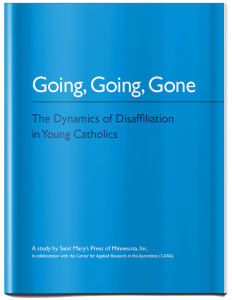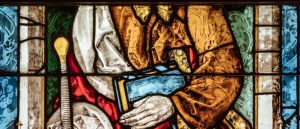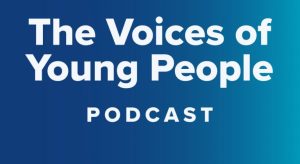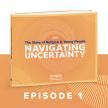UNDERSTANDING CHURCH DEPARTURES
Symposium Explores Why Young People Are Leaving the Church
As of 2005, Boston and the surrounding dioceses comprised the fourth largest dioceses in the United States in comparison to Los Angeles, New York, and Chicago. However, the diminishment of Boston’s Catholic culture shows former Catholics now constitute the largest (non) religious bloc in the Boston area. Some ex-Catholics have joined other religious bodies. Others take no interest in religious affairs. Still, others think of themselves as Catholic, but they neither practice their faith nor follow its teachings. As the journalist, Philip Lawler observes: “In the opening years of the twenty-first century, practicing Catholics are once again a small minority in Boston.”
The last study was done through St. Mary’s Press called, Going, Going, Gone: The Dynamics of Disaffiliation in Young Catholics. A super project done as a follow-up from the same publisher is called, Beyond Disaffiliation: A Process of Hopefilled Action.

FINDINGS ON AMERICANS LEAVING RELIGION IN THE CHANGING RELIGIOUS LANDSCAPE IN AMERICA
Why Americans Are Leaving Religion
The American religious landscape has undergone substantial changes in recent years. However, one of the most consequential shifts in American religion has been the rise of religiously unaffiliated Americans. This trend emerged in the early 1990s. In 1991, only six percent of Americans identified their religious affiliation as “none,” and that number had not moved much since the early 1970s. By the end of the 1990s, 14% of the public claimed no religious affiliation. The rate of religious change accelerated further during the late 2000s and early 2010s, reaching 20% by 2012. Today, one-quarter (25%) of Americans claim no formal religious identity, making this group the single largest “religious group” in the U.S.
Faith in Flux: Leaving Catholicism in the USA
While the ranks of the unaffiliated have grown the most due to changes in religious affiliation, the Catholic Church has lost the most members in the same process; this is the case even though Catholicism’s retention rate of childhood members (68%) is far greater than the retention rate of the unaffiliated and is comparable with or better than the retention rates of other religious groups. Those who have left Catholicism outnumber those who have joined the Catholic Church by nearly a four-to-one margin. Overall, one-in-ten American adults (10.1%) have left the Catholic Church after having been raised Catholic, while only 2.6% of adults have become Catholic after having been raised something other than Catholic.
Stories of Young Adults
St. Mary’s Press published the important study, Going, Going Gone in 2017. Listen to several other young adult voices from the study in their stories of faith both inside and outside of the Church.
Justin

In his own words, Justin shares the story of his faith journey and relationship with the Catholic Church. Transcript: I attended Catholic school as long as […]
Lauren

In her own words, Lauren shares the story of her faith journey and relationship with the Catholic Church. Transcript: If the universe was created by God, […]
Beatrice

In her own words, Beatriz shares the story of her faith journey and relationship with the Catholic Church. Transcript: I was born in San Carlos, Sonora, […]
US Catholic Bishop to Pastoral Leaders and Parents
The phenomenon of the rising number of people who are disaffiliating from the Catholic Church—and religion altogether—presents a challenging cultural situation for the Church today. However, as Pope Francis reminds us, “challenges exist to be overcome! Let us be realists, but without losing our joy, our boldness and our hope-filled commitment. Let us not allow ourselves to be robbed of missionary vigor!” (Evangelii Gaudium, no. 109).
While our current historical moment represents a crisis in the life of the Church, it is also a beautiful invitation for us. It is serving as a summons to smart and spiritually alert catechists, evangelists, and witnesses, willing to give their lives to the great task before them. As you view the video, here is a discussion booklet that can engender further conversations and insight.
Springtide Research Institute

Latest Research with Young People and Religion
The researchers listen directly to young people as they respond to research and share about the issues impacting their lives. Explore the episodes below as the Springtide team breaks open the data with the real experts: young people, in their own voices.
Springtide Executive Director Dr. Josh Packard talks with Marte Aboagye, producer of The Voices of Young People Podcast, about key themes and takeaways from Season 5, exploring how the 10 guests’ stories correspond with our latest report: The State of Religion & Young People 2021: Navigating Uncertainty.

Navigating Uncertainty
Lucy, a college student at Villanova University, shares how she weaves an appreciation for tradition with a need for exploration in how she defines and approaches her spiritual life. Participating in small faith communities, playing music in various religious and non-religious spaces, and connecting with the natural world are practices she finds integral for nurturing her inner and outer life.

Lucy, Age 21
Elyse, a high school sophomore in Massachusetts, is a Catholic young person who emphasizes the importance of making space for questions as well as doubt within the realm of religion. Her spiritual practices include participating in school masses that are student-run, spending time with her family, and being alone to write or meditate.
